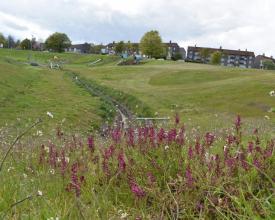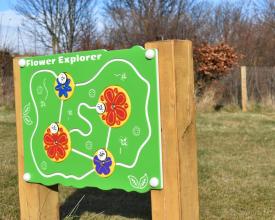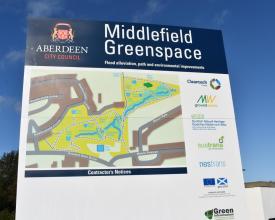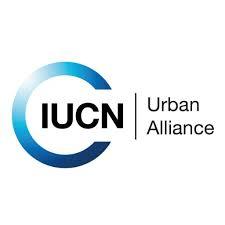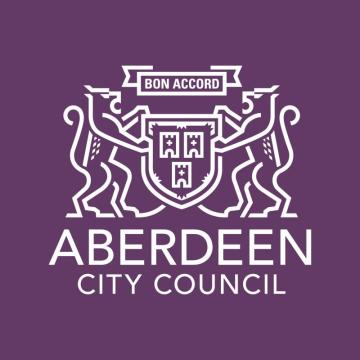
Middlefield Greenspace and Regeneration Project

The Middlefield Greenspace and Regeneration Project, run by the Aberdeen City Council with support from the Green Infrastructure Fund, aims to create a public space that offers a host of social and environmental improvements through urban regeneration.
The intention of the project is to reduce the risk of flooding through stormwater infrastructure improvements. This is supplemented with improved accessibility of the park, a range of formal and informal play opportunities, exercise trails (for a range of abilities), play areas, short grass areas, and picnic areas. Outdoor learning in nature is encouraged with wildflower areas, wetland planting and ponds.
The project was developed in consultation with the community between 2014 and 2016 and work was completed in November 2019.
Context
Challenges addressed
Location
Impacts
The Project has created a high-quality, readily accessible, outdoor recreational area. The park provides a space for the local community to engage in a wide range of activities. It is anticipated that these improvements and activities will have a positive effect on a range of deprivation indicators. In summary, the project has achieved the following:
- improved quality and accessibility of the park;
- improved path network and enhanced opportunities for outdoor recreation;
- creation of a diverse matrix of habitats, connected to the wider greenspace network, so as to support native biodiversity;
- improved water quality and management, especially flood alleviation through the opening and re-naturalising of the Scatter Burn; and
- increased community confidence and cohesion, through their involvement in the design, delivery and future use of the park.


